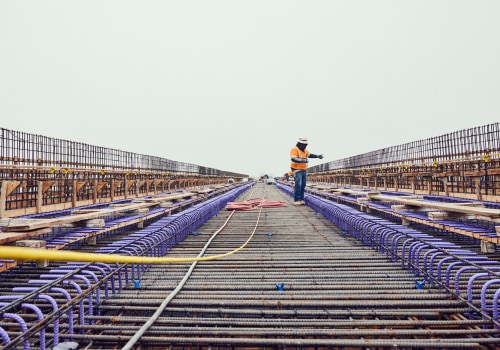As an expert in transportation and urban planning, I have been closely following the developments in Los Angeles County's transportation system. With the county's population expected to reach 10 million by 2050, it is crucial to address the growing demand for efficient and reliable transportation options. In response to this, the county has embarked on several rail projects to improve the overall transportation network.
The Current State of Transportation in Los Angeles County
Los Angeles County is known for its car-centric culture, with a majority of residents relying on personal vehicles for their daily commute. This has resulted in heavy traffic congestion and air pollution, making it difficult for people to get around the city.The existing bus system, operated by the Los Angeles County Metropolitan Transportation Authority (Metro), has been struggling to keep up with the increasing demand for public transportation. According to Metro's 2019-2020 Annual Report, the bus ridership has been declining over the years, with a 5% decrease from the previous year. This can be attributed to various factors such as unreliable schedules, long wait times, and overcrowding. As a result, many commuters have turned to other modes of transportation, including ride-sharing services and personal vehicles.
The Need for Rail Projects
In an effort to address these issues and provide better transportation options for the growing population, Los Angeles County has invested in several rail projects. These projects aim to expand the existing rail network and connect different parts of the county, making it easier for people to travel within and outside the city. One of the most significant rail projects currently underway is the Purple Line Extension, which will extend the existing Purple Line subway from its current terminus in Koreatown to Westwood.This project is expected to reduce travel time between these two areas from 45 minutes to just 25 minutes. It will also provide a direct connection to the University of California, Los Angeles (UCLA), one of the largest universities in the country. Another major project is the Crenshaw/LAX Line, which will connect the Crenshaw District to Los Angeles International Airport (LAX). This project will not only provide a much-needed rail connection to the airport but also improve access to job opportunities and other amenities for residents in the Crenshaw area.
The Impact on Existing Bus Routes
With these new rail projects in the works, many people are wondering how it will affect the existing Bus Routes in Los Angeles County. The short answer is that there will be changes, but they are necessary for a more efficient and integrated transportation system. One of the main changes that will occur is the restructuring of bus routes to complement the new rail lines.For example, once the Purple Line Extension is completed, some bus routes that currently run parallel to this line may be modified or eliminated. This is to avoid duplication of services and encourage more people to use the new rail line. Additionally, with the new rail lines providing faster and more direct connections, some bus routes may be shortened or rerouted to feed into these lines. This will not only improve efficiency but also reduce travel time for commuters. However, it's important to note that these changes will not happen overnight. Metro has stated that they will work closely with community members and stakeholders to ensure that any changes made are in the best interest of the public.
They have also promised to provide alternative transportation options for those who may be affected by the changes.
The Benefits of Integrated Transportation
While some may see these changes as an inconvenience, it's essential to understand the long-term benefits of an integrated transportation system. With the new rail projects, people will have more options to get around the county, reducing their reliance on personal vehicles. This will not only ease traffic congestion but also improve air quality and reduce carbon emissions. Moreover, an integrated transportation system will make it easier for people to travel between different parts of the county, promoting economic growth and development. It will also provide better access to job opportunities, education, and other essential services for residents in underserved areas.In Conclusion
The new rail projects in Los Angeles County, CA are a step in the right direction towards creating a more efficient and sustainable transportation system.While there will be changes to existing bus routes, these changes are necessary for the overall improvement of the county's transportation network. With proper planning and community involvement, these projects have the potential to transform the way people travel in and around Los Angeles County.







